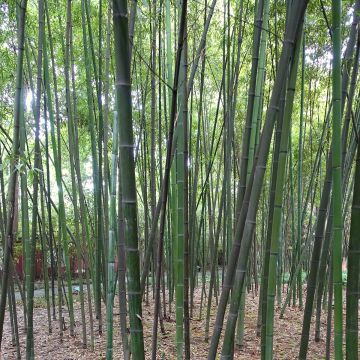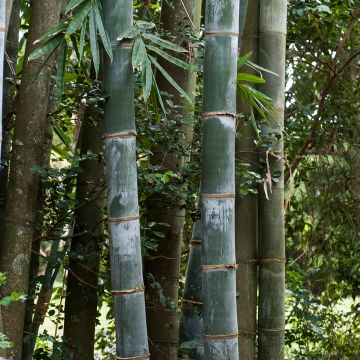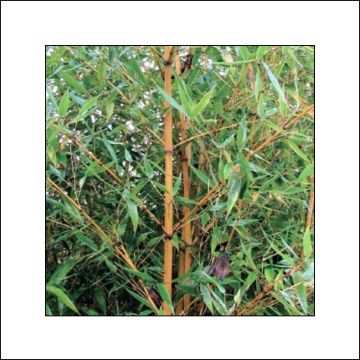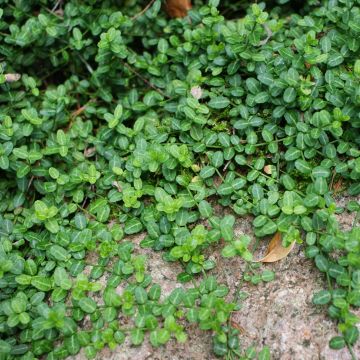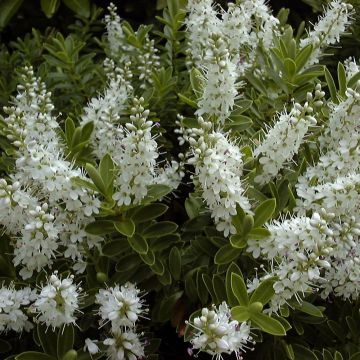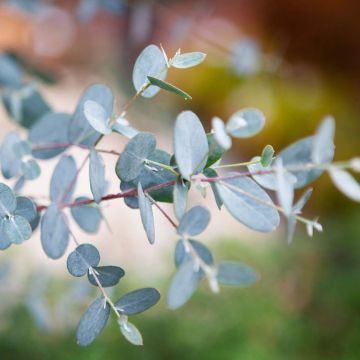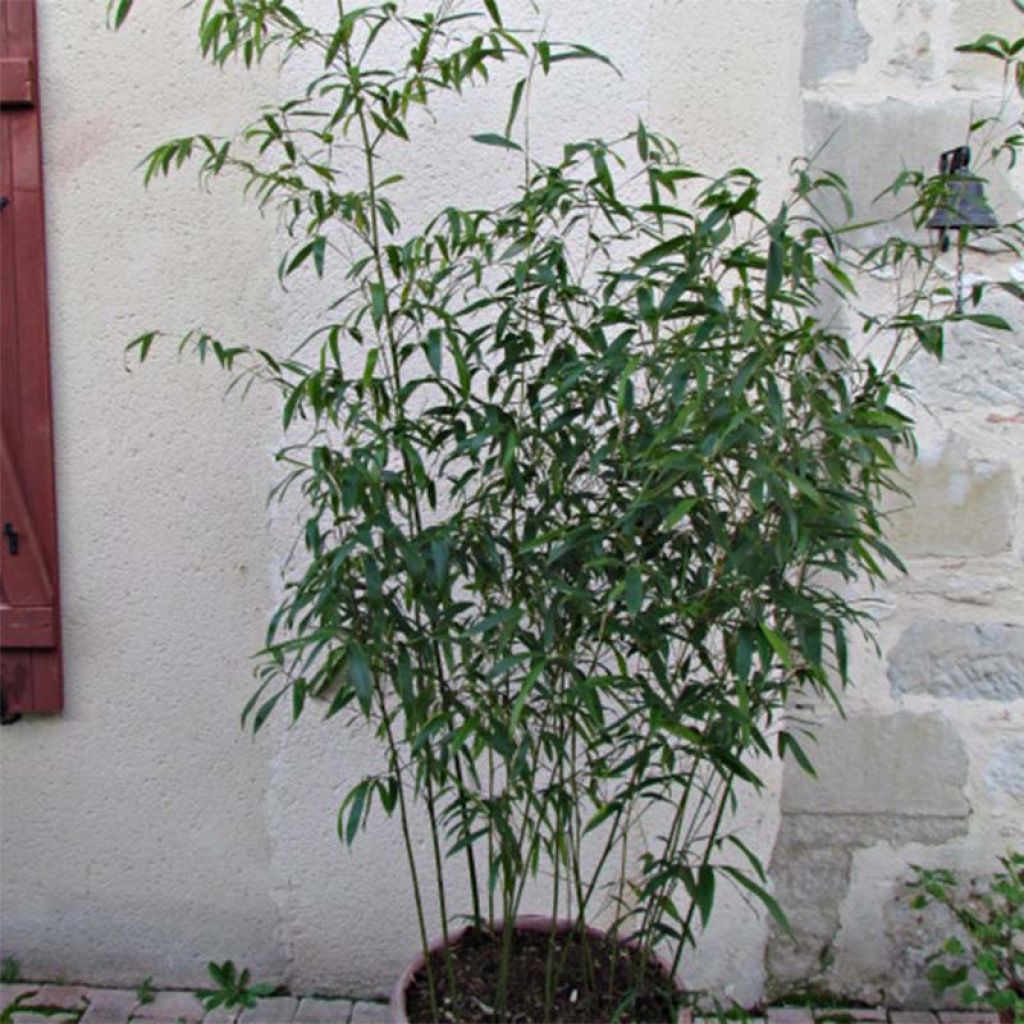

Phyllostachys rubromarginata - Bambou moyen
Phyllostachys rubromarginata
Phyllostachys rubromarginata
This item cannot be shipped to the selected country
Oversize package delivery charge from €6.90
More information
Schedule delivery date,
and select date in basket
This plant carries a 24 months recovery warranty
More information
We guarantee the quality of our plants for a full growing cycle, and will replace at our expense any plant that fails to recover under normal climatic and planting conditions.
Oversize package: home delivery by special carrier from €6.90 per order..
Express home delivery from €8.90.
Does this plant fit my garden?
Set up your Plantfit profile →
Description
Phyllostachys rubromarginata is a species bamboo that is both highly ornamental, accommodating, and highly appreciated for the density of its vegetation. With its very resistant culms, upright habit, and abundant foliage carried in variegated panicles, this running bamboo develops in the manner of clump-forming bamboos, forming large impenetrable clumps, playing its role as a windbreak perfectly. Perfectly cold-hardy, it adapts to all situations and tolerates heavy, poorly drained, or temporarily waterlogged soils. In a hedge, as a solitary clump, in a mass planting, in a grove, or even in a container, this Phyllostachys lacks neither presence, elegance, nor efficiency. In the kitchen, its young shoots are a delicate dish.
Originally from southern China, from the Guangxi and Guangdong provinces, not far from the Vietnam border as well as the region of Hong Kong, Phyllostachys rubromarginata belongs to the Poaceae family. It is a kind of giant grass with woody stems and weakly running rhizomes, which may need to be contained with anti-rhizome barriers. It grows rapidly, with an upright habit that is slightly open and spreading at the foliage level. It produces canes (or culms) densely clustered at the base. These stems are initially purple and pubescent when young, then they take on an incomparably shiny light green colour and are equipped with light green cauline sheaths that become whitish with red-copper margins. At maturity, the culms are a very bright green, they can measure up to 5cm (2in) in diameter and 5 to 7m (16 to 23ft) in height. The foliage of this bamboo is particularly abundant, composed of medium-sized leaves of a light green colour, measuring 9 to 10cm (4in) long and about 1.5 to 1.8cm (1in) wide. It is evergreen, but the leaves fall and regenerate twice a year, mainly in autumn but also in spring. This bamboo has air-filled rhizomes that allow it to adapt to temporarily flooded soils.
Undeniably the star of Asian-inspired gardens, bamboo suits many styles, from the most contemporary to the most exotic, including natural gardens or water gardens. When planted alone, it quickly creates small, very exotic forests, its graphic design brings verticality to the decor. Its rapid growth and density make it an excellent candidate to create an effective and elegant windbreak, especially when planted in fertile and moist soil. Bamboos blend very well together, choose varieties with differently coloured culms. They are always perfect near water features that they appreciate for their freshness. A wide avenue lined on both sides with bamboos will become simply regal. If you install your bamboo on the edge of a body of water, it will be imperative to install an anti-rhizome barrier to avoid puncturing the impermeable liner of your pond.
The young shoots of this bamboo are edible and highly prized by food lovers. However, it is necessary to boil them for a while before eating them.
Report an error about the product description
Phyllostachys rubromarginata in pictures
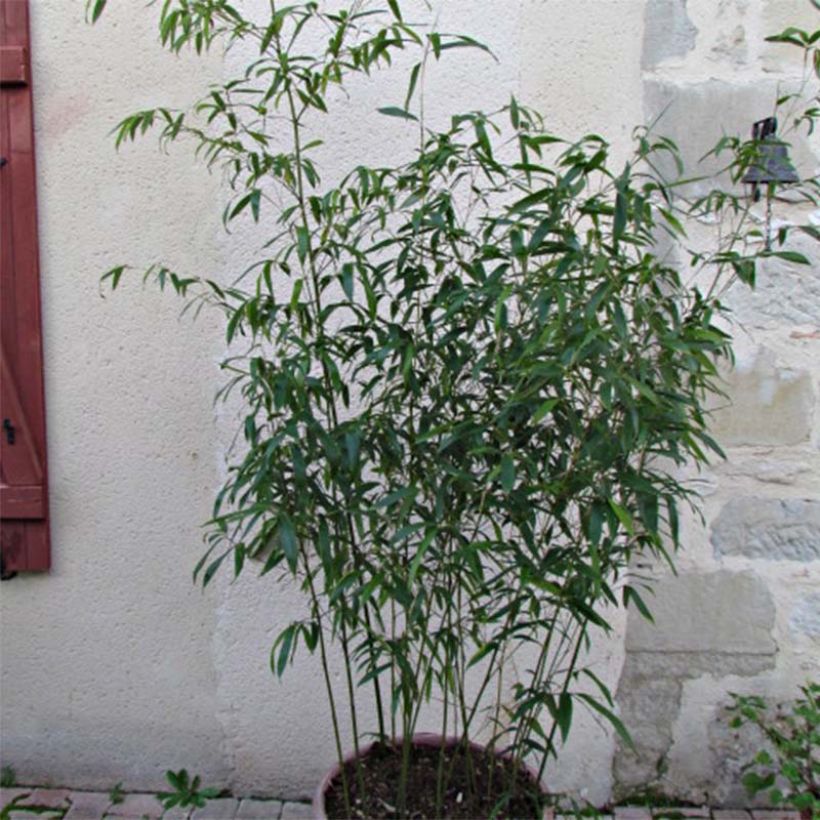

Plant habit
Foliage
Botanical data
Phyllostachys
rubromarginata
Poaceae
China
Other Phyllostachys
Planting and care
Cultivated in containers, bamboos can be planted at any time of the year, except in case of frost. Nevertheless, the best planting period is in late summer and autumn, when the soil is warm and rainfall is more frequent. The planting distance depends on how you will use your bamboos: for a mass planting, allow a spacing of 1.8 to 2.2 metres (6 to 7 feet) between each plant. For a hedge, this distance is reduced to 1 to 1.4 metres (3 to 5 feet).
In general, bamboo prefers rich, well-drained soil that remains moist, acidic or neutral. They can tolerate slightly chalky soil. Phyllostachys rubromarginata can be planted both in full sun and in partial shade. It is highly resistant to cold (up to -30°C (1°F)). This bamboo can adapt to any ordinary soil, even clayey and poorly drained, occasionally very dry or temporarily flooded.
During planting, do not hesitate to loosen the soil and thoroughly moisten the root ball by soaking it. You can add well-decomposed compost that you will rake on the surface. Watering should be followed for at least the first year in open ground and continuously if your bamboos are grown in pots. The establishment time may sometimes seem a bit long, but don't panic!
For bamboos with trailing rhizomes, the installation of a rhizome barrier (thick and resistant polypropylene film) is essential because these varieties, which disregard the notion of property limits, can quickly colonize large areas. The rhizome barrier should be buried vertically, leaving a height of 10cm that should be inclined 15° towards the plant.
As for maintenance, bamboo is not demanding: remember to weed around the base at least initially until its dead leaves, left on the ground, form a natural mulch. An application of nitrogen fertilizer (well-decomposed manure or liquid fertilizer) in spring and autumn can be beneficial.
Planting period
Intended location
Care
This item has not been reviewed yet - be the first to leave a review about it.
Evergreen shrubs
Haven't found what you were looking for?
Hardiness is the lowest winter temperature a plant can endure without suffering serious damage or even dying. However, hardiness is affected by location (a sheltered area, such as a patio), protection (winter cover) and soil type (hardiness is improved by well-drained soil).

Photo Sharing Terms & Conditions
In order to encourage gardeners to interact and share their experiences, Promesse de fleurs offers various media enabling content to be uploaded onto its Site - in particular via the ‘Photo sharing’ module.
The User agrees to refrain from:
- Posting any content that is illegal, prejudicial, insulting, racist, inciteful to hatred, revisionist, contrary to public decency, that infringes on privacy or on the privacy rights of third parties, in particular the publicity rights of persons and goods, intellectual property rights, or the right to privacy.
- Submitting content on behalf of a third party;
- Impersonate the identity of a third party and/or publish any personal information about a third party;
In general, the User undertakes to refrain from any unethical behaviour.
All Content (in particular text, comments, files, images, photos, videos, creative works, etc.), which may be subject to property or intellectual property rights, image or other private rights, shall remain the property of the User, subject to the limited rights granted by the terms of the licence granted by Promesse de fleurs as stated below. Users are at liberty to publish or not to publish such Content on the Site, notably via the ‘Photo Sharing’ facility, and accept that this Content shall be made public and freely accessible, notably on the Internet.
Users further acknowledge, undertake to have ,and guarantee that they hold all necessary rights and permissions to publish such material on the Site, in particular with regard to the legislation in force pertaining to any privacy, property, intellectual property, image, or contractual rights, or rights of any other nature. By publishing such Content on the Site, Users acknowledge accepting full liability as publishers of the Content within the meaning of the law, and grant Promesse de fleurs, free of charge, an inclusive, worldwide licence for the said Content for the entire duration of its publication, including all reproduction, representation, up/downloading, displaying, performing, transmission, and storage rights.
Users also grant permission for their name to be linked to the Content and accept that this link may not always be made available.
By engaging in posting material, Users consent to their Content becoming automatically accessible on the Internet, in particular on other sites and/or blogs and/or web pages of the Promesse de fleurs site, including in particular social pages and the Promesse de fleurs catalogue.
Users may secure the removal of entrusted content free of charge by issuing a simple request via our contact form.
The flowering period indicated on our website applies to countries and regions located in USDA zone 8 (France, the United Kingdom, Ireland, the Netherlands, etc.)
It will vary according to where you live:
- In zones 9 to 10 (Italy, Spain, Greece, etc.), flowering will occur about 2 to 4 weeks earlier.
- In zones 6 to 7 (Germany, Poland, Slovenia, and lower mountainous regions), flowering will be delayed by 2 to 3 weeks.
- In zone 5 (Central Europe, Scandinavia), blooming will be delayed by 3 to 5 weeks.
In temperate climates, pruning of spring-flowering shrubs (forsythia, spireas, etc.) should be done just after flowering.
Pruning of summer-flowering shrubs (Indian Lilac, Perovskia, etc.) can be done in winter or spring.
In cold regions as well as with frost-sensitive plants, avoid pruning too early when severe frosts may still occur.
The planting period indicated on our website applies to countries and regions located in USDA zone 8 (France, United Kingdom, Ireland, Netherlands).
It will vary according to where you live:
- In Mediterranean zones (Marseille, Madrid, Milan, etc.), autumn and winter are the best planting periods.
- In continental zones (Strasbourg, Munich, Vienna, etc.), delay planting by 2 to 3 weeks in spring and bring it forward by 2 to 4 weeks in autumn.
- In mountainous regions (the Alps, Pyrenees, Carpathians, etc.), it is best to plant in late spring (May-June) or late summer (August-September).
The harvesting period indicated on our website applies to countries and regions in USDA zone 8 (France, England, Ireland, the Netherlands).
In colder areas (Scandinavia, Poland, Austria...) fruit and vegetable harvests are likely to be delayed by 3-4 weeks.
In warmer areas (Italy, Spain, Greece, etc.), harvesting will probably take place earlier, depending on weather conditions.
The sowing periods indicated on our website apply to countries and regions within USDA Zone 8 (France, UK, Ireland, Netherlands).
In colder areas (Scandinavia, Poland, Austria...), delay any outdoor sowing by 3-4 weeks, or sow under glass.
In warmer climes (Italy, Spain, Greece, etc.), bring outdoor sowing forward by a few weeks.





































